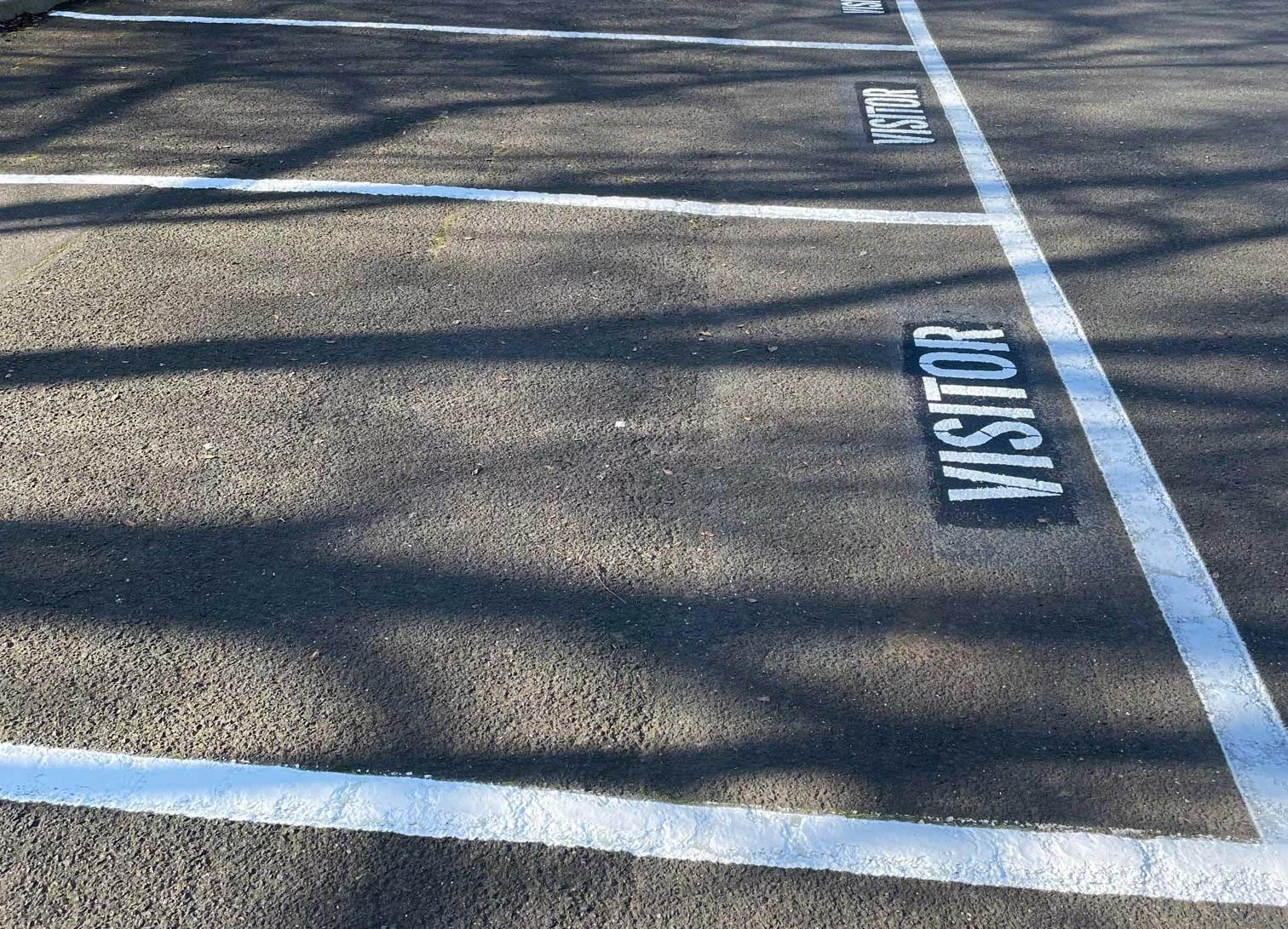Disabled parking line marking in public spaces is more than just painting lines—it’s a commitment to accessibility, community safety, and compliance with Australian standards. Properly marked disabled parking bays ensure people with mobility challenges have fair access to essential services, promote safety in busy car parks, and show respect for all members of the community.
Why Disabled Parking Line Marking Matters
1. Accessibility for All
- Enhanced Access: Accurate disabled parking line marking ensures people with disabilities can park closer to entrances, reducing the physical effort required to access facilities.
- Inclusion: Clearly marked bays send a strong signal that businesses and public venues are welcoming to everyone.
2. Safety and Convenience
- Reduced Hazards: Marked accessible bays and adjacent shared zones prevent obstruction of ramps and pathways, lowering the risk of accidents.
- Security: Clear lines help prevent unauthorised parking, ensuring spaces remain available for those who need them most.
3. Legal Compliance
- Australian law, including the Disability Discrimination Act 1992 and state regulations, mandates accessible parking in public and commercial car parks.
- Accurate line marking, signage, and design are required to avoid fines and legal action, as well as to deliver fair access for people with disabilities.
What Makes Good Disabled Parking Line Marking?
Complying with Australian Standards
Public spaces must meet the precise requirements set out in AS/NZS 2890.6:2009, which dictate the size, placement, and markings of accessible parking bays:
| Requirement | Standard Specification |
| Bay width (angled/parallel) | 2,400mm x 5,400mm (plus 2,400mm shared area) |
| Line marking width | Unbroken, 80–100mm wide, yellow only |
| Contrast and slip resistance | Highly visible, non-slip paint |
| International Symbol of Access | White icon on blue background, specific placement |
| Shared access aisle | Clearly marked, usually hatched or cross-lined |
| Signage | Must include the International Symbol of Access |
| Height clearance | At least 2,200mm for all accessible spaces |
All elements must remain unbroken and be maintained for clear visibility, even in low-light conditions.
Key Design Considerations
- Visibility: Use of high-contrast, reflective materials keeps markings clear at night or in adverse weather.
- Location: Bays are placed near entrances with direct, unobstructed paths.
- Bollards: Installed in shared access zones for safety and compliance.
- Regular Maintenance: Lines must be repainted as they fade to maintain compliance and functionality.
Consequences of Poor Marking
Improper, faded, or unclear markings:
- Deny access to people with a legitimate need, forcing them to navigate greater distances.
- Increase accident risk for drivers and pedestrians, particularly those with mobility aids.
- Result in fines and possible legal claims against the business or property owner.
- Reflect poorly on a business’s commitment to inclusivity and attention to regulatory detail.
How Accurate Line Marking Prevents Misuse
- Prominent symbols and clear lines discourage unauthorised parking, making enforcement straightforward.
- Consistent standards across public spaces eliminate confusion for permit holders and the general public.
- Visible shared areas ensure space for wheelchair ramps, mobility equipment, and safe entry/exit from vehicles.
Partnering with Professionals
Choosing an experienced provider like Western Suburbs Line Marking ensures:
- Correct application of all colours, symbols, and bay dimensions according to the latest standards.
- Use of premium, non-slip, and weather-resistant materials for long-lasting, clear lines.
- Efficient project delivery with minimal disruption to your business or public facility operations.
- Ongoing support for regular inspection and maintenance of your accessible parking solutions.
Frequently Asked Questions
How often should disabled parking bays be repainted?
Regular inspections at least annually are advised. Repainting is necessary if lines appear faded or are difficult to see, especially in poor light or bad weather.
Can I design bays to suit my layout, or must I follow national standards?
All public disabled parking spaces must comply with Australian Standards, including bay size, sign placement, and line colour, regardless of your car park’s unique shape or size.
What happens if my car park is non-compliant?
You risk fines, legal claims, and damage to your reputation. Compliance should be checked by experienced professionals, particularly after any renovations.
Why is yellow used for accessible bay line marking?
Yellow lines offer maximum visibility and ensure clear distinction from standard parking bays, as required by AS/NZS 2890.6 and related regulations.
Supporting Accessibility: A Shared Responsibility
Investing in accurate disabled parking line marking isn’t just about meeting legal requirements—it’s about upholding the values of inclusivity, safety, and fair access. Businesses, councils, and facility managers all play a vital role in ensuring their spaces are welcoming and usable for everyone.
For guidance, compliant solutions, and a commitment to quality results, trust Western Suburbs Line Marking. Their experience, strict adherence to regulations, and premium workmanship guarantee your car park will be accessible, safe, and fully compliant—demonstrating genuine care for every member of your community.
